
February 16, 2024
The training pushed for organizing by building intentional majorities instead of numerically large but short-lived movements.
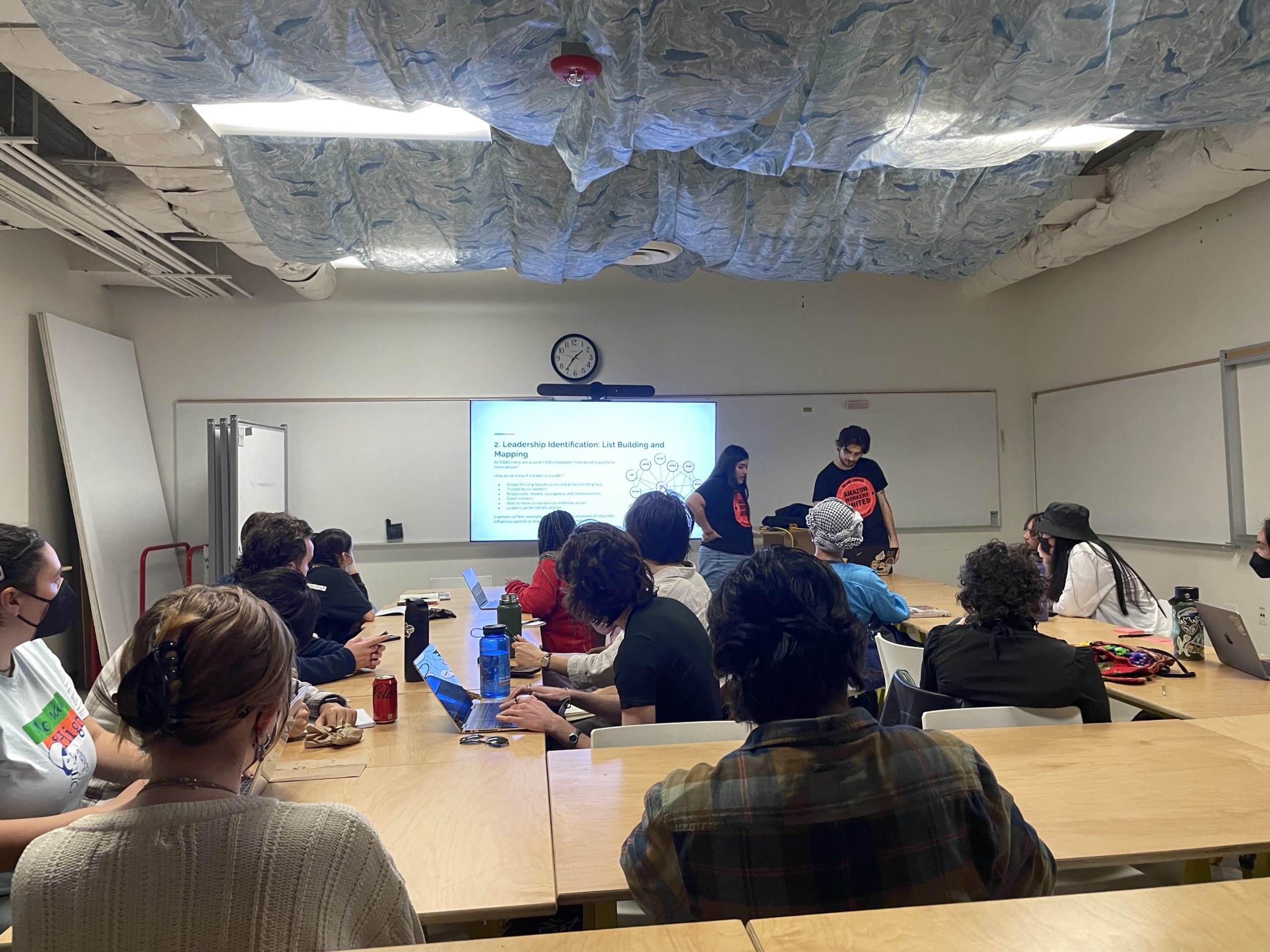
Around two dozen students from a variety of campus organizations attended an “Intro to Structured Organizing” training by two Inland Empire Amazon Workers United leaders at the Hive on Feb. 3. The training pushed students to consider structure-based organizing, based on intentional majorities, instead of self-selecting mobilization, which often leads to large numbers but little longevity. The Claremont Student Worker Alliance organized the political education event.
The Inland Empire Amazon Workers United is an organization that is building worker power to create better working conditions at the Amazon facilities across the region. By organizing the Air Hub facility at San Bernardino and leading walkouts, IEAWU organizers won a ninety cent differential for night shift workers, got a $1.25 raise, and secured a number of engineering improvements that protect worker safety.
5C students have worked with IEAWU in the past, attending a picket at KSBD to help support DAX8 drivers after they unionized in June 2023 and helping fundraise for striking Palmdale delivery drivers this past November. CSWA invited Ray Hill-Cristol PZ ’21 and Anna Ortega, two IEAWU leaders, to lead the training.
Hill-Cristol and Ortega started by giving historical context and defining structured organizing as “methodically building power and bringing in people who don’t already agree with each other.”
“The goal is building majorities of a bounded constituency,” or any clearly defined group of people under social structures such as neighborhoods, schools, precincts, or workplaces who may not share the same beliefs.
Hill-Cristol noted that the benefit to structured organizing compared to self-selecting mobilization is that it won’t inevitably die down, since it is a long-term process of building power through an ever expanding collective majority instead of “an action of self-selecting activists that already agree with each other.” He used examples such as BLM and the Women’s March, which were organically backed by people with the same ideals but didn’t create sustained momentum.

Hill-Cristol and Ortega went on to highlight the four key parts of building a movement through structured organizing.
Ortega explained the first step as identifying who the decision makers are in a specific social structure, as well as “who has the power to influence the decision makers”. For Amazon, the decision makers would be the CEO and shareholders, while the workers have the power to influence them because the worker’s labor enables the decision makers’ profits.
Next, she discussed leadership identification. An important part of structured organizing is finding a leader that is already respected within their social circles. “The reason we talk about leaders is you can’t talk to everybody, [you] have limited time and limited resources. So you have to talk to the people that can talk to [more] people and move them into action.”
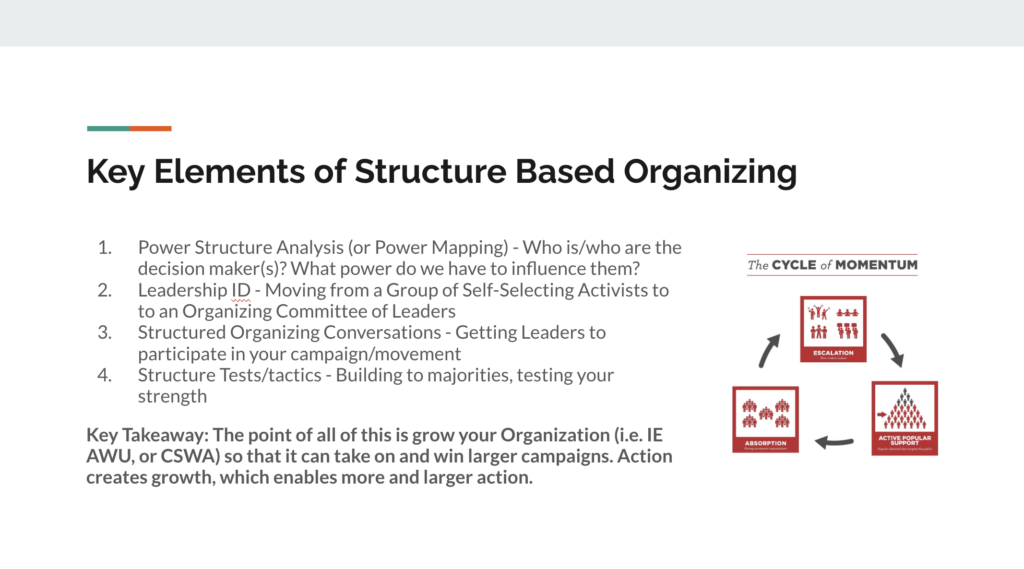
The third step is to create structured organizing conversations, which can help engage people who are initially hostile to the union by making them “think about how [the issue is] going to impact them”. Ortega emphasized the importance of every conversation as an introduction.
She used the image of a bullseye with five different levels to show people’s differing commitment/enthusiasm for the movement, ranging from the first level being active organizers, to the fifth level being those who are hostile.
She identified that “Fear is the number one thing that holds us back from building power” and that the goal of a structured organizing conversation is to help move people past that fear and towards the first level of the bullseye.
The final step is utilizing tactics such as structure tests and escalation to figure out the strength of the movement. These include “petitions, sticker ups, rallies, marches on the bus, and then walk outs and strikes.”
Hill-Cristol established that the most important part of a structure test is having quantifiable data. For example, “how many workers [are] in our building, how many participated in action”, or any hard data that demonstrates how strong your movement is.
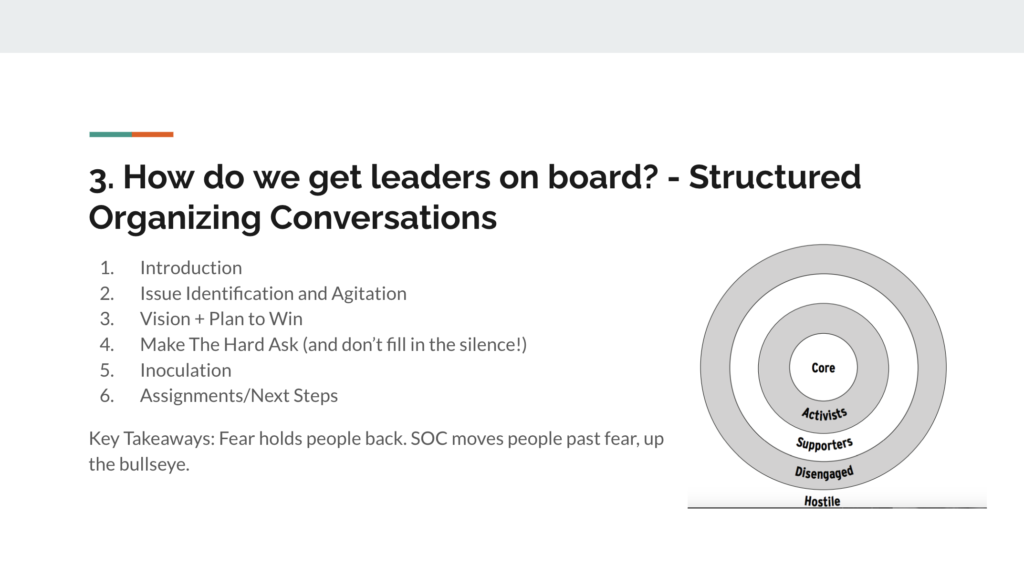
The presentation ended with Hill-Cristol and Ortega answering questions from the audience about how to implement structured organizing at the 5Cs and beyond.
One student asked, “How do you make sure that, as you’re organizing, you’re also trying to push people’s consciousness towards other movements as a long term priority?”
Hill-Cristol and Ortega highlighted how getting more people involved builds more power. “Taking action raises people’s idea of what’s possible and opens the door to other connections with other movements”.

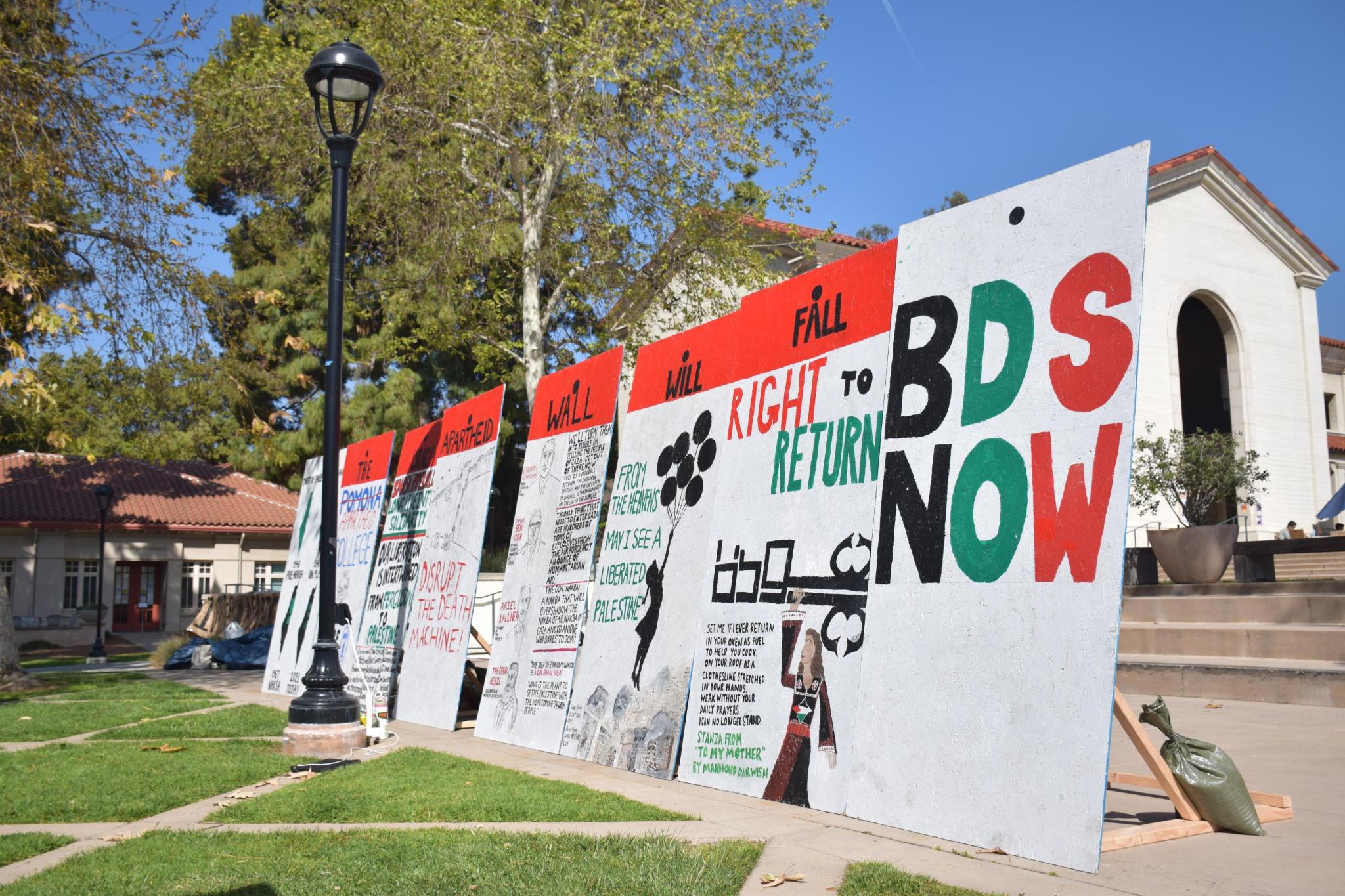
Palestine
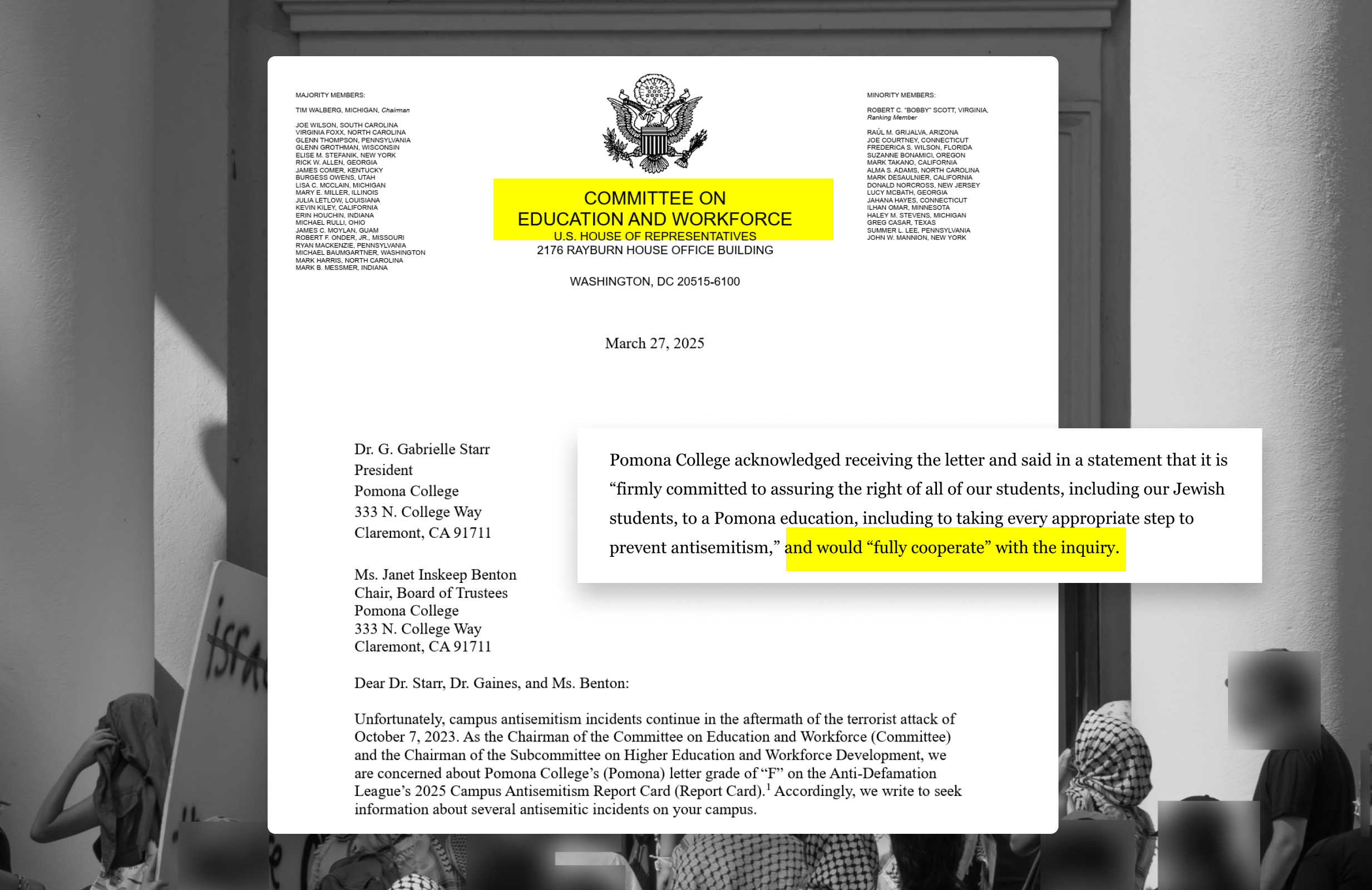
Palestine

Palestine

Undercurrents reports on labor, Palestine liberation, prison abolition and other community organizing at and around the Claremont Colleges.
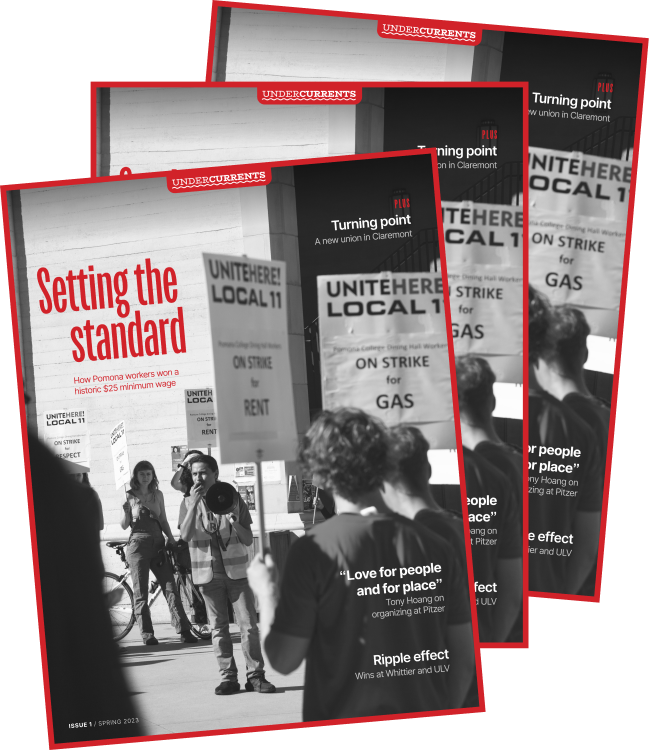
Issue 1 / Spring 2023
Setting the Standard
How Pomona workers won a historic $25 minimum wage; a new union in Claremont; Tony Hoang on organizing
Read issue 1